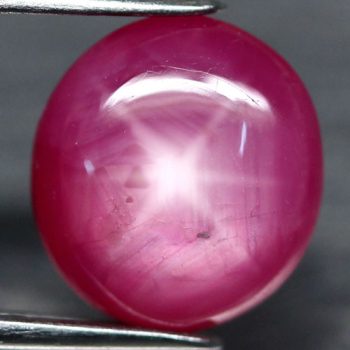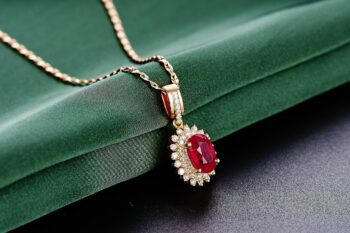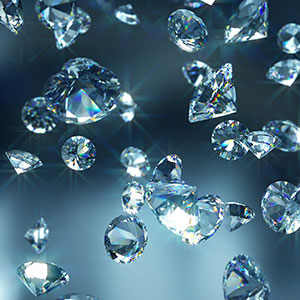What Is Asterism In Gemstones?
Star Gemstones display what is know as asterism. What asterism is was a question we didn’t know the answer to until we got into gemology. However, we were familiar with the stones that exhibited it. We just didn’t know the stars were called asterism. This is probably the case with you as well. Do you like star sapphires? What about star ruby? The stars in these gemstones are formed by small crystals or fibers in the stone that reflect light, forming a star. The stars can be 4, 6 or 12 rayed as well. In this post, we will discuss what is asterism is and how to find stones that show it. We will also give you some pointers on how not get ripped off buying a lab stone as natural.
What Is Asterism?
Asterism in gemstones refers to the phenomenon where a star-like pattern appears on the surface of a stone when it is cut and polished. This optical effect is caused by the presence of needle-like inclusions within the gemstone. These inclusions, typically composed of minerals such as rutile or hematite, reflect light in a way that creates a star-shaped pattern. The number of rays in the star can vary, with six-rayed asterisms being the most common. Asterism is most commonly seen in precious gems such as star sapphires and star rubies, but can also occur in other stones such as star garnets and star diopside. The presence of asterism can greatly enhance the value and beauty of a gemstone, making it a sought-after feature for collectors and jewelry enthusiasts.

When Star Gemstones Were Discovered
Starred gemstones were discovered thousands of years ago. These precious gems, also known as star rubies and star sapphires, are unique because of their asterism – a phenomenon that creates a star-like pattern on the surface of the stone. The discovery of star gemstones can be traced back to ancient civilizations such as India and Sri Lanka.
In India, starred gemstones were highly regarded and were believed to possess mystical powers. They were often used in jewelry and talismans to bring good luck and protection. The ancient Indians were skilled in the art of lapidary, which is the cutting and polishing of gemstones, and they were able to enhance the star effect of these gemstones through their craftsmanship.
Similarly, in Sri Lanka, star gemstones were treasured and considered to be a symbol of royalty. The Sri Lankan lapidaries were renowned for their expertise in cutting star gemstones to perfection, maximizing their beauty and brilliance. The star effect of these gemstones made them highly sought after by both local and foreign traders.
Today, star gemstones continue to captivate people with their unique beauty and allure. They are still highly valued in the world of gemstones and are often used in exquisite jewelry pieces. The discovery of starred gemstones remains an important milestone in the history of gemology, showcasing the ingenuity and craftsmanship of ancient civilizations.
Why Asterism In Gemstones Is So Sought After
Asterism in gemstones is highly sought after due to its unique and captivating appearance. This optical phenomenon occurs when light reflects off needle-like inclusions within the gemstone, creating a star-like pattern. Precious gems such as star sapphires and star rubies are particularly prized for their asterism. The presence of asterism adds an enchanting and mystical quality to these gemstones, making them highly desirable among collectors and jewelry enthusiasts.
One of the main reasons why it is so sought after is its rarity. Gemstones that exhibit this phenomenon are relatively uncommon, making them highly valuable and desirable. Especially the 12 rayed stars. The formation of asterism requires specific conditions, such as the presence of aligned needle-like inclusions within the gemstone. These inclusions, known as rutile or hematite needles, interact with light to create the star-like effect. As a result, gemstones with strong and well-defined asterism are considered to be extremely rare and precious.
In addition to their rarity, starred gemstones also possess a unique and mesmerizing beauty. The star-like pattern that appears on the surface of these stones adds a sense of depth and movement, enhancing their overall visual appeal. When properly cut and polished, the asterism in gemstones can create a stunning display of light and color. This makes them highly sought after for use in jewelry, as they can serve as a focal point or a statement piece. Whether set in a ring, pendant, or earrings, gemstones with asterism are sure to attract attention and admiration.
Types Of Gems Showing Asterism
Asterism is a fascinating phenomenon seen in certain gemstones. It refers to the appearance of a star-shaped pattern when the gem is viewed under a single light source. This optical effect is caused by the presence of needle-like inclusions within the gemstone. There are several types of gems that exhibit asterism, including star sapphires, star rubies, and star garnets.
Star sapphires are perhaps the most well-known gemstones that display asterism. These gems have a distinct six-rayed star pattern that appears to float on the surface of the stone. The star effect is caused by needle-like inclusions of the mineral rutile, which align themselves in a way that reflects light in a star shape. Star sapphires can come in a range of colors, from blue to pink to yellow, and are highly prized for their unique beauty.
Star rubies are another type of gemstone that showcases asterism. Similar to star sapphires, these rubies have a six-rayed star pattern that shimmers across the surface of the stone. The star effect in rubies is caused by needle-like inclusions of the mineral hematite. Star rubies are known for their deep red color and are considered to be one of the most valuable and rare gemstones in the world.
Star garnets are a lesser-known variety of gemstone that also exhibit asterism. These gems have a four-rayed star pattern that forms when light is reflected off needle-like inclusions of the mineral rutile. Star garnets are typically dark red in color and are found in a few locations around the world, including India and the United States.

Famous Starred Gemstones
The most famous star rubies include the “Rosser Reeves Star Ruby” and the “De Long Star Ruby,” while notable star sapphires include the “Star of India” and the “Star of Bombay.” These gemstones are admired for their beauty and rarity, making them valuable additions to any jewelry collection. They are also very expensive!
What Types Of Jewelry Work Best With Starred Gemstones
When it comes to choosing jewelry to complement starred gemstones, there are a few options that work particularly well. One popular choice is to pair these gemstones with simple, elegant settings. This allows the beauty of the starred gemstone to take center stage, while still providing a touch of sophistication. Another option is to opt for jewelry designs that incorporate other celestial elements, such as moon or star motifs. This can create a cohesive and enchanting look. Lastly, consider selecting jewelry pieces with a touch of sparkle, such as diamond accents or white gold settings. This can enhance the brilliance of the starred gemstone and add a touch of glamour.
Beware Of Lab Star Sapphires or Rubies Sold As Natural
Lab-created gems, such as star sapphires or rubies, are becoming increasingly popular in the jewelry market. While these synthetic gems can offer a more affordable alternative to their natural counterparts, it is important for consumers to be aware of the potential for misrepresentation. Some unscrupulous sellers may attempt to pass off lab-created gemstones as natural, in order to fetch a higher price. To avoid falling victim to this deception, it is crucial to educate oneself about the characteristics and properties of natural gemstones, and to purchase from reputable sources that provide accurate information about the origin and quality of their products.
One of the key differences between natural and lab-created gemstones lies in their formation process. Natural gemstones are created over millions of years through natural geological processes, while lab-created gemstones are synthesized in a controlled laboratory environment. This distinction can be difficult to discern with the naked eye, as lab-created gemstones are designed to closely mimic the appearance of their natural counterparts. However, there are certain telltale signs that can help identify a lab-created gemstone, such as the absence of natural inclusions or the presence of specific growth patterns that are characteristic of synthetic gemstones.
To ensure that you are purchasing a natural gemstone, it is advisable to seek out reputable jewelers or gemstone dealers who provide proper documentation and certification for their products. Reputable sellers will often have gemstones certified by independent gemological laboratories, such as the Gemological Institute of America (GIA), which can provide an unbiased assessment of the gemstone’s authenticity and quality. Additionally, it is important to ask questions and seek detailed information about the gemstone’s origin, including its mining location and any treatments it may have undergone. A trustworthy seller will be transparent and forthcoming with this information, helping you make an informed decision.
Signs Your Star Sapphire Or Ruby Is Man Made
Are you curious about whether your star sapphire or ruby is natural or man-made? Here are some signs to look out for:
1. Lack of Inclusions: Natural gemstones often have inclusions, which are small imperfections or internal features. Man-made gemstones, on the other hand, are usually free from inclusions. So, if your sapphire or ruby appears flawless under magnification, it is likely to be man-made.
2. Uniform Color Distribution: Natural gemstones often have variations in color intensity and distribution. Man-made gemstones, however, tend to have a more uniform color throughout. If your gemstone displays a consistent color without any variations, it is likely to be man-made.
3. Unusual Star or Chatoyancy: Star sapphires and rubies are known for their unique optical phenomena, such as asterism (star effect) or chatoyancy (cat’s eye effect). While these effects can occur naturally, they are also replicated in man-made gemstones. If the star or chatoyancy in your gemstone appears too perfect or symmetrical, it is likely to be man-made.
Remember, it’s always best to consult with a professional gemologist to determine the authenticity of your gemstone. They have the expertise and tools to accurately assess whether your star sapphire or ruby is natural or man-made.

Looking For Star Gemstone Jewelry?
We create custom jewelry from the ground up. That means we source each stone for each piece we make. As a result, you will have your choice of any starred gemstones available at the time. If you were shopping a chain jewelry store, you will be limited to what they have on hand. And that will generally a lab stone.
You might be thinking that custom jewelry is too expensive. While it can cost more than made jewelry, that isn’t always the case. Depending on the materials, we can make something just for you that would actually cost less than at a chain store.
So..give us a shot! You can view our portfolio of custom engagement rings or custom pendants to look for idea. Or you can contact us with your own idea.




